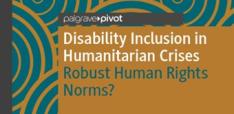Energy and Health: The Urgent Bond – Part 1
Why we can't explore global health without accounting for everyday energy needs.
Any concern about global health today is a concern about energy. These two domains belong together like plants and sunlight. They are bound by the realities global poverty and its root in energy poverty, and by climate change, whose dominant cause is carbon energy and whose effects on public health now loom everywhere before our eyes. Ignoring the energy-health relation will almost certainly doom any program for public well-being to marginal or temporary victories. Consider, for example, the problem of cervical cancer in Africa.
This disease has rapidly spread in sub-Saharan countries, with over 75,000 new cases each year. Nearly half-a-million women will die from it before 2030, a number that will erase all progress made in lowering maternal mortality. Cervical cancer defines a serious health challenge evolving into a calamity. Its major causes are certain forms of human papillomavirus (HPV), spread by sexual contact. With some 200 types, HPV is widespread, often producing less severe conditions that go away on their own. No less than 79 million people, most in their 20s and late teens, carry non-lethal forms of it in the U.S., and researchers believe that most people in Europe will be infected at some point. In these countries, all forms of HPV infection are readily diagnosed and treated.
Methods for halting the reach of dangerous HPV and treating cases of cervical cancer are not complicated. An effective vaccine exists, with a track record in over 250 million people. Screening is straightforward, using a Pap Test (or smear) that takes a sample of cells from the cervical area, examines them microscopically, then sends them to a lab for analysis. Treatment employs targeted surgery as well as radiation and chemo therapy, with a good chance of cure if the cancer is caught early. Follow up may be needed to prevent recurrence.
All of these methods depend on electricity. Vaccines, which must be refrigerated, antiseptic conditions, microscopes, lab analyses, all need power. Ditto surgery and chemo/radiation therapy. All of this needs not just power sometimes but a reliable, dependable supply of it. Yet more than 600 million people in sub-Saharan Africa have no electricity and another 200 million have it only intermittently. Small wonder that the worst rates of cervical cancer incidence and mortality occur in those parts of Africa (East, West Africa) with the lowest access to electricity.
A modern hospital, clinic, or other care center is a mere wish without electricity, and transport too. This includes the production and delivery of medicines and anesthetics (on a large, public scale), equipment for diagnosis and treatment, heating and cooling of interior spaces, need for 24-hour lighting, emergency rooms and ambulances, and more. There is, too, the core importance of digital information and equipment. These can be partly handled with batteries and generators, but such are frontier fixes, not sustainable solutions. Just as important is the training of doctors, nurses, and other medical personnel in modern facilities. Today, sub-Saharan Africa has a mere 1.7% of global physicians for more than 13% of global population. Recent reports on medical schools in this vast region underline the modest number of graduates and migration of trained people to wealthier countries and urban areas. The “brain drain” of faculty and specialists defines a major problem. While lower salaries, advancement opportunities, and security are all factors here, the energy connection is no less profound. Physicians wanting to practice forms of medicine for which they were trained will be drawn to places where modern medical care exists. The problem can’t be chalked up to greed or crude self-interest. Care has major limits when power is lacking.
What of the global context? The World Health Organization (WHO) and its many partners have changed the view of disease and health on large scales. Many people continue to think that infectious and contagious illnesses in poor nations kill the most people. Not so. A recent worldwide assessment by WHO declares “An estimated 12.6 million people died as a result of living or working in an unhealthy environments in 2012—nearly 1 in 4 of total global deaths.” What is meant by “unhealthy environment”? In order of impact: air pollution, unclean water, and polluted soil. These are responsible for illnesses with the highest mortality:
Stroke: 2.5 million
Ischemic heart disease: 2.3 million
Cancers: 1.7 million
Chronic respiratory disease: 1.4 million
Diarrhoeal disease: 846,000
Air pollution is a massive contributor to the first four of these. This was widely unexpected, since it applies to all nations, including wealthy ones, where bad air was thought to be a curse of the past. But no. While some pollutants—sulphur and nitrous oxides, lead, and volatile organic compounds (VOC), have fallen, others have grown.
Since the 1990s, epidemiological and laboratory studies have revealed that the greatest threat to human health comes from microscopic particulate matter with aerodynamic diameters of 2.5 to 10 microns (PM2.5, PM10). PM2.5 can penetrate into all areas of the respiratory tract and the circulatory system, damaging the lungs, cardiovascular, and other organs. It also damages a population by aggravating existing conditions and by causing stroke. Such matter is overwhelmingly produced by two sources, coal and diesel—coal burned with little or no pollution controls and diesel fuel in on-road and off-road vehicles with poor controls on exhaust pollutants.
Indoors, the PM problem comes from solid fuels such as wood, animal dung, charcoal, and coal for household cooking and heating. This directly affects as many as 3 billion people, mostly women, very young children, and the elderly, who spend the most time near open and cook stove fires. Not all people who use these fuels live in rural areas. Many are in towns and slums of cities where there is no access to modern energy services. Because women and girls are the primary energy consumers in these families, they suffer the most. In gender terms, alternatives to open fire cooking have both a huge health benefit and a liberating dimension.
Outdoors, the number of deaths attributed to PM2.5 has risen globally, from 3.5 million in 1990 to at least 4.2 million by 2015. The main reason is economic growth in poor and emerging nations, which have turned to coal for power and to lower-quality diesel in truck and train transport. While outdoor PM2.5 is highest in Asia and sub-Saharan Africa, it is far from trivial in Europe, where thousands of deaths are attributed to it each year. In this regard, the VW diesel scandal (aka “dieselgate”), in which actual emissions were found to be much higher than claimed due to software programming, has far greater consequences than just a scam.
Meanwhile, images of smog-blurred downtowns in Chinese and Indian urban settings have become iconic of rapid economic development in emerging nations. Less well-known are the many hundreds of other cities, including some in Europe, where PM2.5 (and PM10) levels are two or more times above the WHO recommended limit (10 micrograms per cubic meter, 10 m/m3). In their most recent report on ambient (outdoor) air pollution, WHO researchers provide data on nearly 3000 cities and towns worldwide, showing that “in 2014 only about one in ten people breathe clean air” (17). Of the 20 cities with the worst air, 14 are in India and China, with levels over 100 m/m3. In Europe, higher levels, ranging from 40 – 80 m/m3, are in Turkey, Eastern Europe, and the Balkans. All of these areas, as well as many others in Asia, suffer especially from the widespread use of coal.
Such levels can be made still worse by seasonal crop fires. While northern India has drawn much attention and study in this regard, such fires are set in many parts of the world, including south and central Africa, Southeast Asia, eastern China, Brazil, and portions of Europe, the U.S., Canada, and Australia. Though often examined on its own, the pollution created by these burn events very often adds to an already dangerous situation and thus should be seen against the year-round presence of PM from energy use, especially of coal.
Why this dependence on an energy source known to be a grave public health hazard? The common answer: coal is both abundant and cheap, therefore attractive to developing nations eager to advance their economies. But there’s something else. Coal is not just plentiful, it is very widespread. Many nations—India, Turkey, Vietnam, Thailand, Mongolia, Indonesia, Pakistan, Kazakhstan, Poland, Czech Republic, South Africa, Zimbabwe, among others—have significant reserves. Coal can be transported on existing roads and railways, and its power plants and factories can be built quickly when lacking a full complement of pollution controls.
Thus, coal satisfies a powerful idea: energy security. This tends to be defined as having a reliable and uninterrupted supply of energy sources at affordable prices. But in terms of actual energy policy—the decisions that states actually make—it comes back to a simple formula:
“maximize use of what you’ve got, while minimizing imports.” It is a geopolitical idea, one that Adam Smith would recognize as mercantilist to the core. It has been fundamental to U.S. policy and related anxieties for many decades. More recently, it helped power China’s break-neck industrialization based on coal, and is now being pursued by India with the same fuel. It is an idea no less basic for all the nations just mentioned above. If China, however, has lowered its coal dependence in the last few years, it would be foolish to believe the country will close up most of its mines anytime soon. Moreover, such reductions are possible because China is developing other domestic sources—hydropower, shale gas, nuclear, and renewables. Chinese companies, however, have been contracted worldwide to build coal plants in dozens of other countries, pretty much all of whom have coal resources of their own. A powerful geopolitical concept about energy has therefore become a colossal challenge for global public health.
In a second part to this essay, some ideas for alternative energy systems will be taken up. A key conclusion that emerges from the above is that money, technology, information, and good intentions are not enough to achieve sustainable goals in global public health. Just as important are changes in ideas.
Image credit: Ed Ivanushkin via Flcikr (CC BY-SA 2.0)


